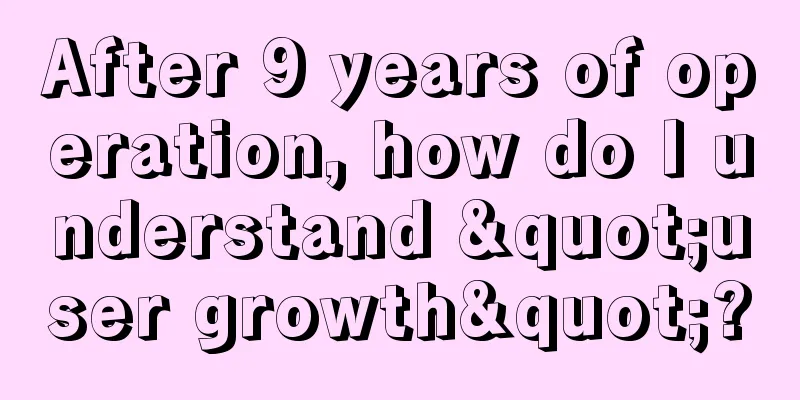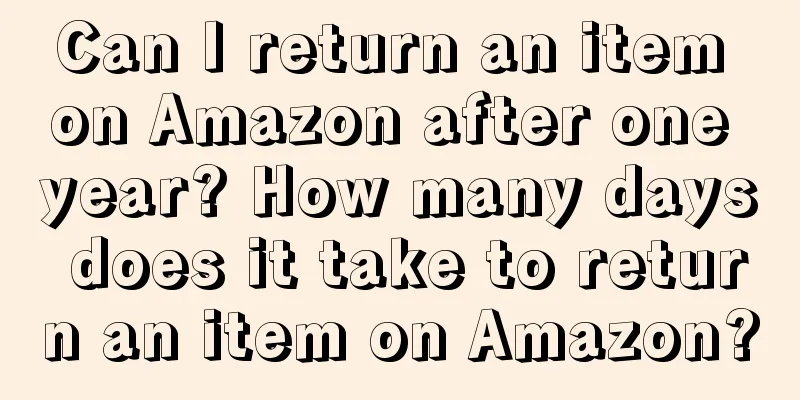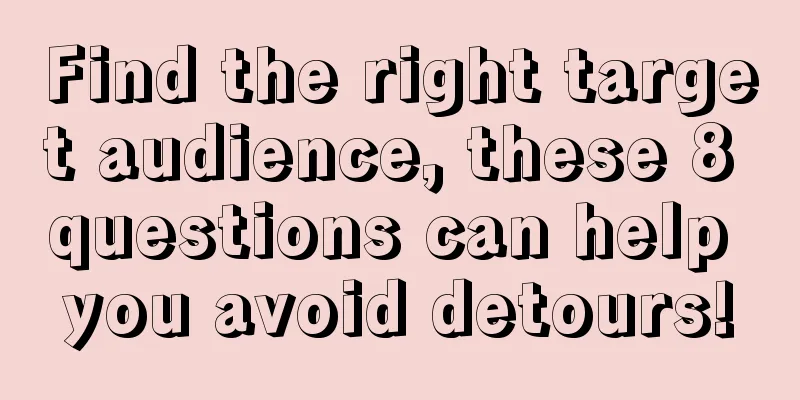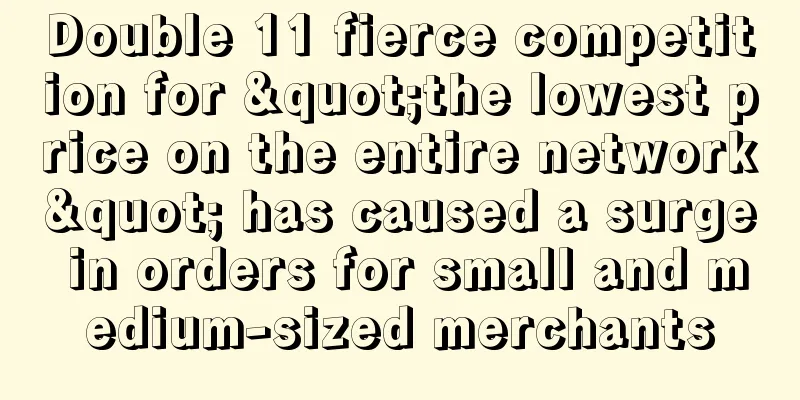After 9 years of operation, how do I understand "user growth"?

Here are my thoughts on user growth. 01 The origin of user growthRecently, when I was doing a team WorkShop, I reviewed the user growth work. What is user growth? Let’s first look at its development history. In 2007, Dave McClure from the United States proposed the AARRR model in a sharing session, which qualitatively divided user growth work into five categories, namely acquisition, activation, retention, revenue and referral. There have been many discussions in the industry about these five tasks, which will not be repeated here. In 2010, Sean Ellis (co-founder and CEO of GrowthHackers.com), a growth hacking online community, coined the term "growth hacker". The development of "user growth" in China has experienced the publication of "Growth Hacker" by Fan Bing in 2015 and the translation and publication of "Growth Hacker" by Sean Ellis by Zhang Ximeng (founder of GrowingIO) in 2017. The concept of "user growth" has gradually become popular in China. In 2018, "Silicon Valley Growth Hacker's Practical Notes" by Qu Hui (former growth director of Growth Hacker Network Community) was published, which gave "user growth" a more concrete practical method. The United States emphasizes the concept of "growth hacking" because their Internet environment does not have the role of "operations" and most people focus on R&D/product positions. In contrast, in China, after nearly seven years of fermentation, "user growth" has finally settled in the "operation" position. The reason for this, I think, is that operations are responsible for business indicators, which accounts for the vast majority. The AARRR model is essentially a qualitative model for distinguishing user growth. If we further classify these five types of work, we can divide them into: Serving the user scale:
Serving user value: revenue. So, by analogy, user growth is essentially an "operational" job, which revolves around "user scale" and "user value". 02 The essence of addition and retentionToday let’s talk about “user scale” first, and leave user value aside for now. We ask ourselves a few questions: What is new user acquisition? What is user retention? What is their essence? I believe that the essence of adding new users is the process of reaching users, conveying product value and converting users through a specific combination of means under certain constraints. How to understand it? Let me give you a very inappropriate analogy (disclaimer: the analogy is just for the convenience of understanding, and it is definitely not to objectify women), for example: Xiao Ming and Xiao Hong went on a blind date. Xiao Ming said, "I have 10 apartments in the city center." Xiaohong said: "It doesn't matter whether you have a house or not, what matters most is your good character." She eventually fell in love with him. In this case, the product is Xiao Ming, the user is Xiao Hong*N, and the channel linking the product and the user is the channel for meeting blind date partners, such as relatives and friends/matchmaking agencies/dating apps, etc. The core value of this product is that Xiao Ming owns ten houses. So what is the essence of user retention? The essence of user retention is to maximize the user's subjective utility for the product by continuously meeting the user's needs through building specific scenarios within the product. To help you understand this matter, let me quote the above analogy. After Xiaohong married Xiaoming, she said that Lao Wang also had 10 houses and was also handsome, so what did you have? Xiao Ming said, "Don't panic. Although he is handsome, I am very gentle. Besides, I have a 1 billion inheritance that will be deposited into my account this year." Xiaohong said: "I still prefer gentle men." In this case, we found that the old scenario (10 houses) could no longer meet the needs of users, so the clever user growth team built a new scenario (1 billion inheritance) to make the user (Xiaohong) feel that this product (Xiaoming) continued to satisfy her subjective utility. Regarding utility, product guru Yu Jun wrote in his "Product Methodology":
To put it simply, different people have different preferences for different things, and everyone has their own preferences. 03 How to add a new userOkay, now that we understand the essence of "new user acquisition" and "user retention", let's look back at how we should do "new user acquisition" and "user retention". The following takes Meituan as an example. Since I am not a Meituan employee, I will only apply the above concepts to Meituan to observe how we increase user acquisition and retain users. The essence of adding new users is the process of reaching users, conveying product value and converting users through a specific combination of means under certain constraints. Looking at the vast market, where can Meituan find our users? 1. Offline1) Own scenes
2) Non-owned scenes
2. OnlineIn principle, we need to find places where users gather (large scale and long usage time), and reach users and convert them through some means. According to QuestMobile's data, we can strengthen the reach opportunities in the two fields of short videos and instant messaging. 1) Instant messaging: WeChat MAU 1 billion
Short video: Douyin MAU 670 million, Kuaishou 410 million
When adding new users, scale, cost, and certainty are our core judgment factors. The priority of project advancement always tests our decision-making ability. The above is an explanation of how to add new users. 04 How to achieve "user retention"Next, let’s talk about how to achieve “user retention”. The essence of user retention is to maximize the user's subjective utility for the product by continuously meeting the user's needs through building specific scenarios within the product. So what we are thinking about is still what kind of subjective utility our product has on users, how to continue to produce utility for them? What needs of users have we not met? Will users find it useful? Is it sustainable? How about certainty? American psychologist Maslow divided human needs into five levels from the perspective of human motivation: physiological needs, safety needs, social needs, respect needs and self-actualization. I personally believe that for an Internet product, the higher the level of user needs, the more difficult it is to meet them. Let’s take Meituan as an example. 1. Physiological needs1) Business development Yes, build more businesses to meet user needs. Yu Jun said in "Product Methodology": "Users are not natural persons, but a collection of needs." Finding a track with a larger potential user population and greater opportunities and establishing a business model can not only continue to meet the needs of existing users of the product, but also bring in more users with such needs (of course, this may also bring greater commercial benefits). The businesses that Meituan is currently betting on, such as "Meituan Best Selection", were created based on this logic. 2) Benefits/benefits Business discounts, activities, red envelopes, points, cash, etc. are all products of this type of demand. 3) Content consumption Dianping’s store exploration content may be the core conversion driver for users under long-term decision-making conditions. 2. Security requirementsFood safety, property safety, and "travel safety" where Didi has fallen into a big pit. It doesn't require you to do well, but the basic safety needs must be met, right? 3. Social needsCommunicate with merchants/riders, interact with producers of high-quality content on Dianping, or go to "Fan Xiaoquan" to see what takeaway your friends ordered? 4. Respect needsLevels, achievements, and your membership card. 5. Self-actualizationBecome a referee for food delivery and judge who is at fault between the user and the merchant. Become an expert on Dianping and share your professional food tips/reviews for more people to see. When doing "user retention", the core things we need to focus on are the level, continuity, and certainty of the subjective utility of the constructed scenarios to the users. The above is my understanding of how to achieve "user retention". Not necessarily correct, for reference only. Author: Biluo, WeChat public account: Operational Meditations |
<<: The top ten most popular IPs in 2022!
>>: The copywriting of BOSS Zhipin has a Dong Yuhui flavor
Recommend
This is how annual targets should be set, not by guesswork.
This article starts from the company's annual ...
Exclusive broadcasting on APP, transformation into live e-commerce, and entry into cultural tourism: Let’s talk about the future development of Oriental Selection
Just yesterday, Dongfang Zhenxuan revealed that it...
Rumors are flying everywhere, is the originator of internet celebrity desserts really going to be out of fashion?
Do you still remember the desserts like Mango Sago...
“Pick-up” social networking is popular, and the food industry also likes to find “pick-ups”?
This article first points out the popularity of th...
Share some basic marketing concepts and important marketing theories
Marketing seems simple but it is not simple at all...
Taking over from Zhang Xiaohui, vertical buyers take up the banner of Xiaohongshu e-commerce
This article introduces benchmark buyers in differ...
Which brands are suitable for the in-house model that saves P&G 10% of media costs?
This article deeply explores the application of th...
How does Foreign Trade Soho collect payments? What is the difference between Foreign Trade Soho and starting your own company?
Foreign trade SOHO, that is, a self-employed perso...
Shopline theme supports Arabic RTL display
In order to help sellers make money in the Middle ...
How to write an Amazon Spring Festival holiday notice? What templates are there?
Before the Spring Festival holiday, Amazon merchan...
This generation of post-00s are all crazy about Phoenix Legend
This article mainly describes the love of Phoenix ...
Who is responsible for the Manner coffee incident?
There is a lot of discussion about the Manner Coff...
With 670,000 followers in one month, the Zibo duck head guy started to sell goods
This article starts from the changes in the popula...
Real opportunities and strategic analysis of the consumer industry in 2023
The analysis of the consumer industry on the marke...
How much does it cost to do cross-border e-commerce on Amazon? Cost details
Amazon is the world's largest cross-border e-c...









